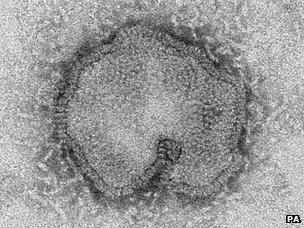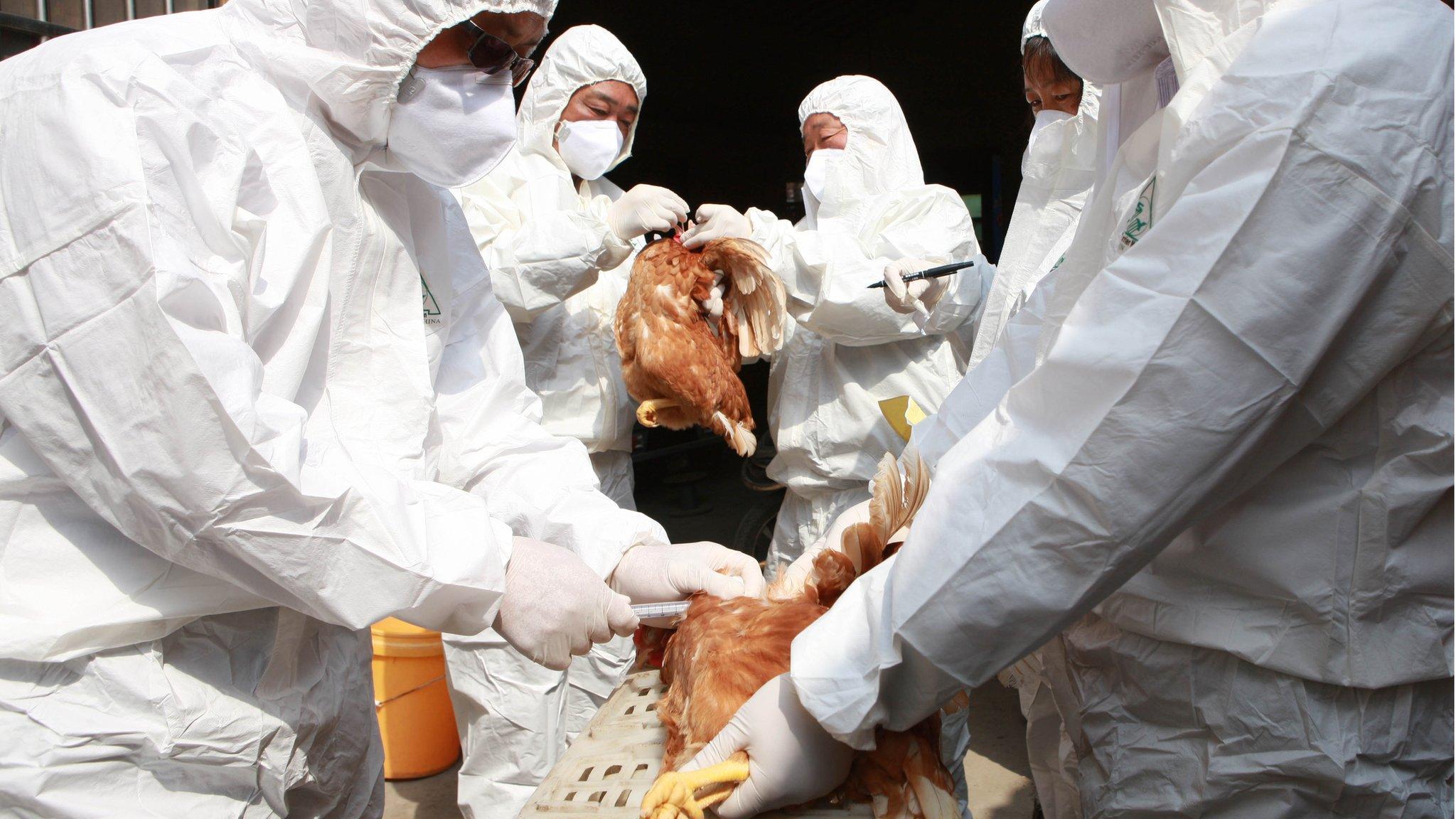Should we worry about H7N9?
- Published
- comments

H7N9 virus
There is a new disease in town - at least there is if you live in eastern China. Long after most people had lost interest in - and the media had stopped writing about - H5N1 bird flu, we now have to get used to another assortment of letters and numbers. So should we all worry about H7N9?
"Yes and no" seems to sum up the view of experts. Yes, because of the potential of flu viruses to cause global disease outbreaks - pandemics. No, because the virus is still confined to China and has no ability at present to transmit between humans.
The facts of the new virus are simply put. In the space of one month more than 100 people have been infected in China. One in five has died and many more are seriously ill in hospital. It causes pneumonia and can lead to multi-organ failure.
The virus originated in chickens and those who have fallen ill either attended live poultry markets or had close contact with infected birds.
"I think we're concerned because we have to prepare. Alarmed? No. The virus in humans is still confined to one region of China. It's got a high population but it still seems to be solely animal to human infection and it is not spreading between humans," said Prof John McCauley, director of a World Health Organization (WHO) collaborating centre in the UK.
H5N1
For years virologists and the WHO warned - in often apocalyptic terms - about the threat posed by H5N1. The Hs and the Ns, external are the surface proteins on the virus and give the different subtypes their name. H5N1 has been infecting and killing humans since 1997 - 628 cases and 374 deaths. , external
H5N1 no longer makes the international headlines but already this year it has caused eight deaths in Cambodia. But thankfully it is still largely a disease of birds and has does not transmit easily between humans.
That does not mean that H5N1 or H7N9 could never become airborne human infections; last year scientists showed that it would take around five mutations for bird flu to do just that. H7N9 has already undergone two of the mutations needed in the space of a month. But whether it will go any further is impossible to predict.
"It's like rolling the dice or winning the lottery. The more you do it, the more likely the mutations are to crop up and therefore limiting the number who are getting infected by this virus at the moment is the best thing that we can do to minimise the chance that this virus could ever turn into a pandemic," said Prof Wendy Barclay, chair of influenza virology, Imperial College London.
Influenza experts have to tread a fine line between alerting the public and alarming them.
"We have been waiting for human to human transmission of H5N1 for years. But that doesn't mean it won't happen tonight or tomorrow. We have to be honest and open that we can't predict whether or when that will happen," said Prof Jeremy Farrar, director of the Wellcome Trust major overseas programme in Vietnam.
H7N9 is the 'nastiest virus in humans in years'
Unlike H5N1, the new virus does not cause illness in birds, making it very difficult to identify infected flocks. International flu experts have praised the Chinese authorities for the way they have shared information about this outbreak.
Many people will be sceptical about the risk of a flu pandemic after the 2009 swine flu outbreak turned out less serious than feared. But pandemics have killed millions in the past - so the essential work to create a vaccine will continue and to track the H7N9 virus will continue.
- Published1 May 2013

- Published1 May 2013

- Published23 January 2013
